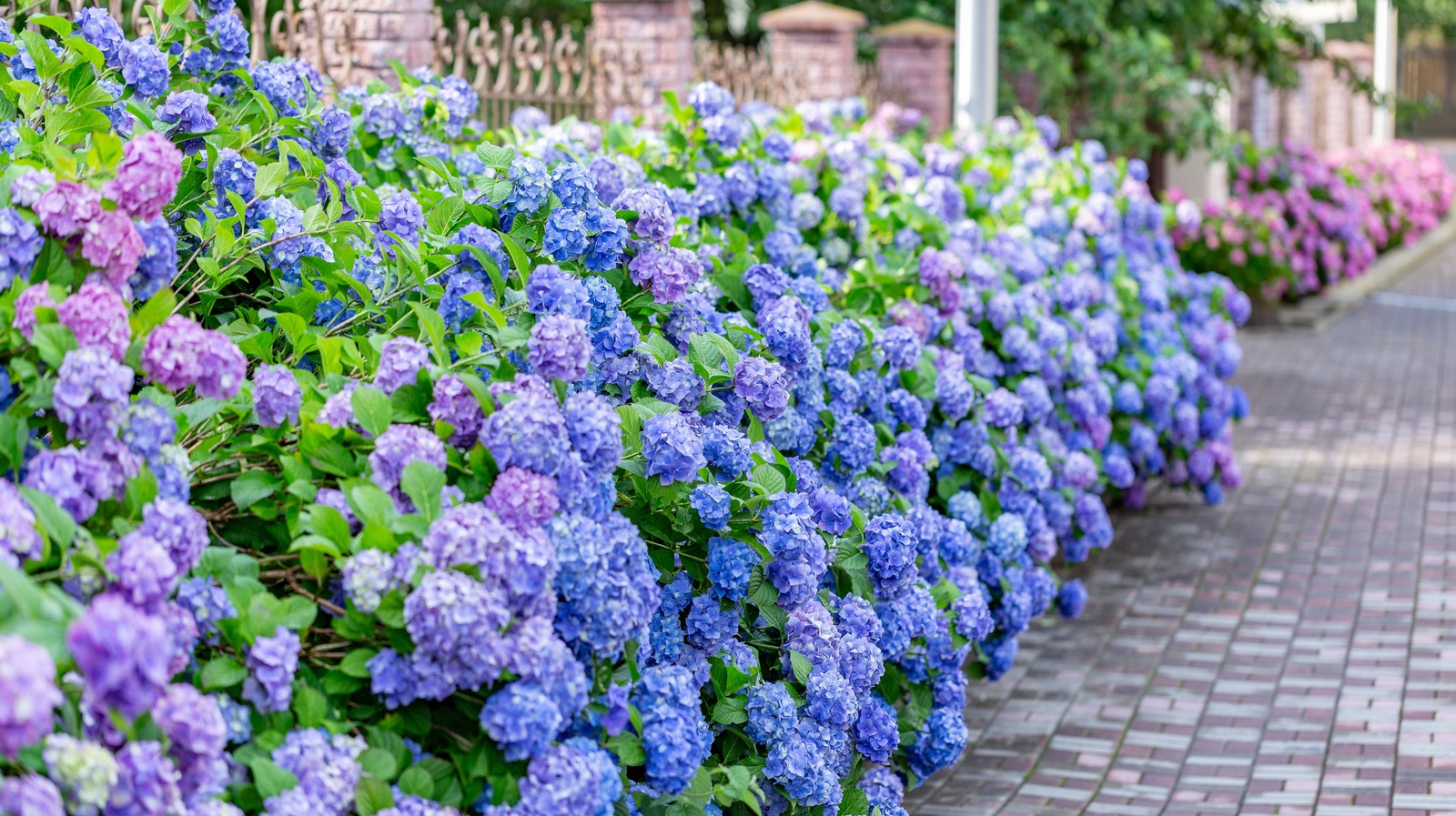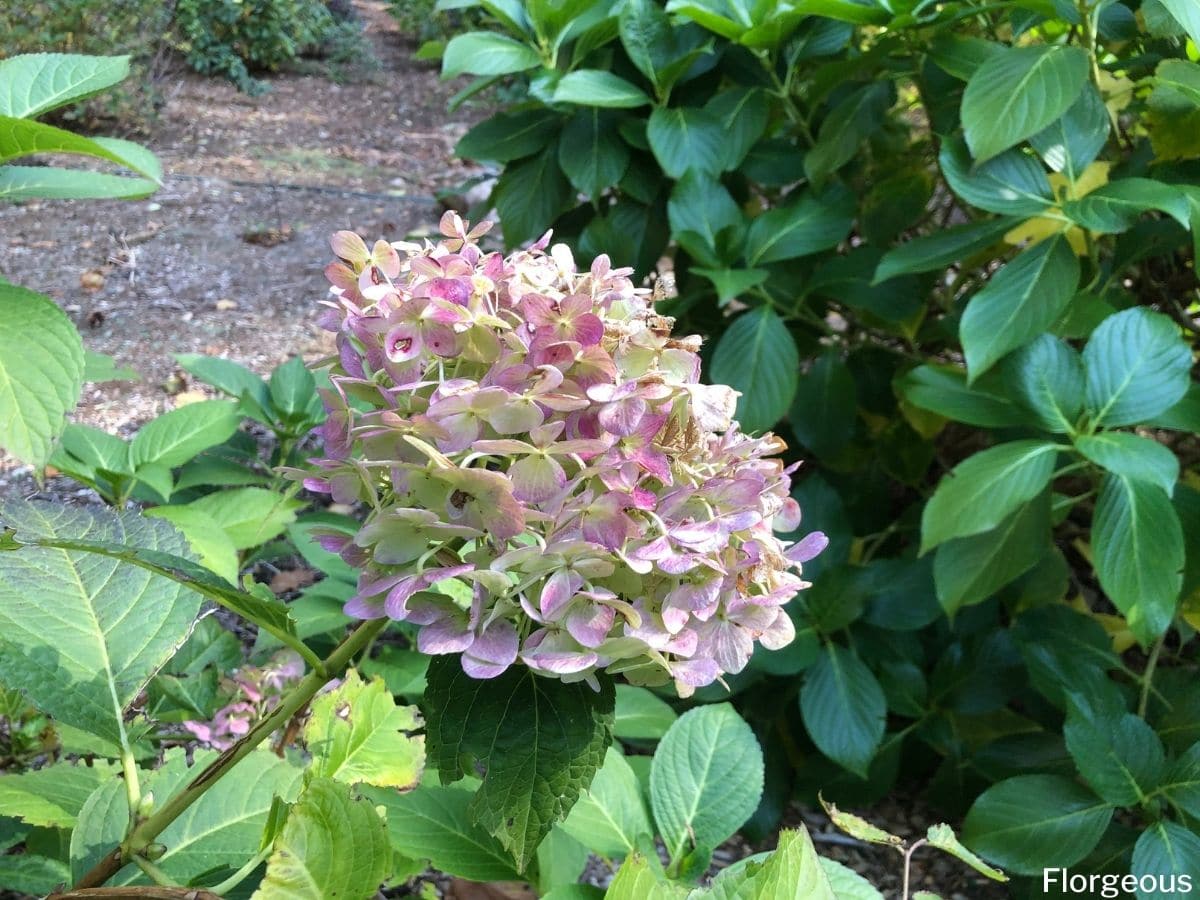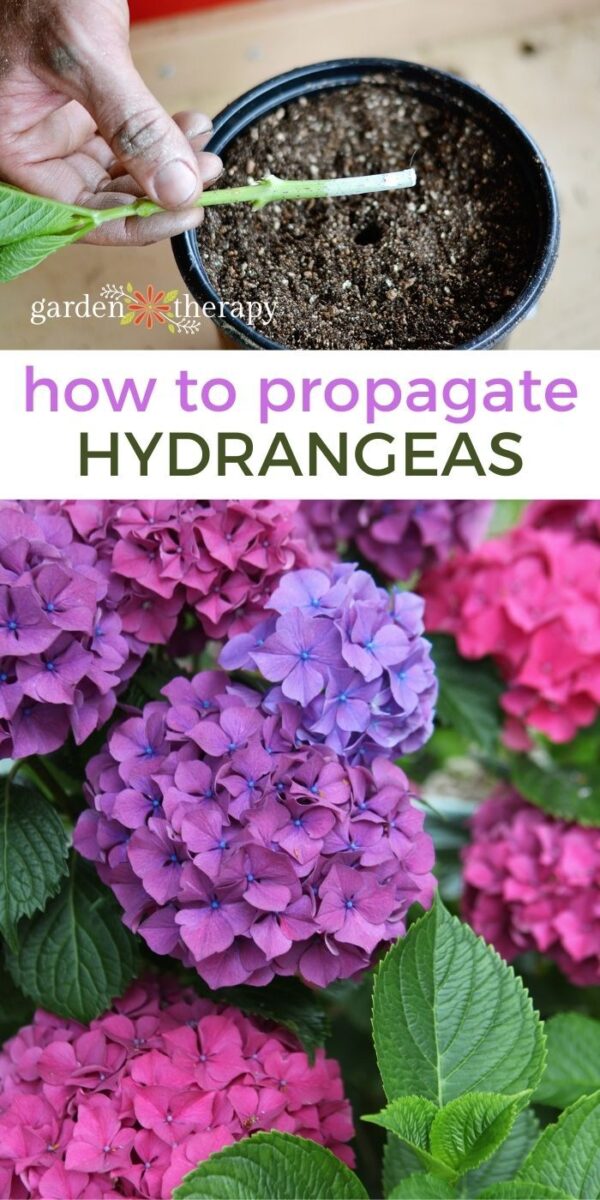Understanding the Basics of Hydrangea Bloom Production
Hydrangeas are one of the most popular flowering shrubs, and their beautiful blooms can add a touch of elegance to any garden. However, getting hydrangeas to bloom can be a challenge, especially for new gardeners. To understand how to make your hydrangea bloom, it’s essential to grasp the basics of hydrangea bloom production. Hydrangeas require specific conditions to produce flowers, including adequate light, temperature, water, and nutrient requirements.
Light is one of the most critical factors in hydrangea bloom production. Most hydrangea varieties require partial shade to full sun, depending on the specific type. Bigleaf hydrangeas, for example, prefer partial shade, while panicle hydrangeas can tolerate full sun. Temperature is also crucial, as hydrangeas typically thrive in temperatures between 65°F and 75°F (18°C and 24°C).
Water and nutrient requirements are also vital for hydrangea bloom production. Hydrangeas need consistent moisture, especially during the first year after planting. However, overwatering can be detrimental, so it’s essential to ensure the soil drains well. Fertilization is also crucial, as hydrangeas require a balanced diet of nutrients to produce flowers. A fertilizer with a slightly acidic pH (around 6.0) and a balanced N-P-K ratio (10-10-10) is ideal for promoting blooming.
By understanding these basic requirements, gardeners can take the first step towards encouraging their hydrangeas to bloom. By providing the right conditions, gardeners can help their hydrangeas produce beautiful flowers that will add a touch of elegance to their garden. Whether you’re a seasoned gardener or just starting out, learning how to make your hydrangea bloom can be a rewarding experience that brings joy and beauty to your outdoor space.
Soil pH and Fertilization: The Key to Encouraging Blooms
Soil pH and fertilization play a crucial role in promoting hydrangea blooms. Hydrangeas require a slightly acidic to neutral soil pH, ranging from 6.0 to 7.0, to produce vibrant flowers. If the soil pH is too high or too low, it can affect the plant’s ability to absorb essential nutrients, leading to poor blooming or no blooms at all.
To determine the soil pH, it’s recommended to conduct a soil test. This can be done by purchasing a soil testing kit or by sending a sample to a laboratory for analysis. Based on the test results, adjustments can be made to the soil pH by adding lime to raise the pH or elemental sulfur to lower it.
In addition to soil pH, fertilization is also essential for promoting hydrangea blooms. Hydrangeas require a balanced fertilizer that is high in phosphorus, which promotes blooming. A fertilizer with a ratio of 10-20-10 (nitrogen-phosphorus-potassium) is ideal for hydrangeas. It’s also important to note that over-fertilization can be detrimental to the plant, so it’s recommended to follow the instructions on the fertilizer package and avoid over-fertilizing.
When it comes to fertilizing hydrangeas, timing is everything. It’s best to fertilize in the early growing season, typically in late March or early April, when the plant is producing new growth. This will provide the necessary nutrients for the plant to produce healthy blooms. Avoid fertilizing in the fall, as this can promote new growth that may not have time to harden off before the winter.
Some popular fertilizers for hydrangeas include Espoma Organic Bloom Plant Food, Miracle-Gro Shake ‘n Feed All Purpose Plant Food, and Scotts Osmocote 14-14-14 Professional Plant Food. These fertilizers are all high in phosphorus and are specifically formulated to promote blooming.
By adjusting the soil pH and providing the right fertilization, hydrangea enthusiasts can encourage their plants to produce vibrant blooms. Remember, the key to promoting blooms is to provide the right conditions, including a slightly acidic to neutral soil pH and a balanced fertilizer that is high in phosphorus. With these tips, you’ll be well on your way to growing hydrangeas that are full of beautiful blooms.
Pruning Techniques to Enhance Blooming
Pruning is an essential technique to encourage hydrangea blooming. By pruning at the right time and using the right techniques, you can promote new growth, increase blooming, and improve the overall appearance of your hydrangea plant. Here are some pruning techniques to enhance blooming:
Removing Dead Flowers: Deadheading is the process of removing spent flowers from the plant. This technique encourages the plant to produce new blooms and prevents seed production, which can divert energy from blooming. To deadhead, simply snip off the spent flower stem at the base, making sure not to damage the surrounding stems or leaves.
Cutting Back Stems: Cutting back stems is a technique used to control the size and shape of the plant. By cutting back stems, you can encourage new growth and promote blooming. Cut back stems to about one-third to one-half of their height in late winter or early spring, before new growth begins.
Shaping the Plant: Shaping the plant is a technique used to maintain its overall appearance and promote blooming. By removing select stems and branches, you can create a more balanced and symmetrical plant. Use pruning shears or loppers to remove any dead, diseased, or damaged stems, and shape the plant to your desired shape.
Pruning at the Right Time: Pruning at the right time is crucial for promoting blooming. For bigleaf hydrangeas, prune in late winter or early spring, before new growth begins. For panicle and smooth hydrangeas, prune in late winter or early spring, or immediately after blooming. For oakleaf and climbing hydrangeas, prune in late winter or early spring, or immediately after blooming.
Pruning Tips: When pruning, make sure to use clean and sharp pruning tools to prevent spreading diseases. Cut stems at a 45-degree angle, and remove any weak or spindly growth. Don’t over-prune, as this can stress the plant and reduce blooming. Finally, prune in the morning, when the plant is at its highest water content, to minimize stress.
By using these pruning techniques, you can promote healthy blooming and improve the overall appearance of your hydrangea plant. Remember to prune at the right time, use the right techniques, and don’t over-prune. With these tips, you’ll be well on your way to growing hydrangeas that are full of beautiful blooms.
Providing the Right Amount of Water and Sunlight
Hydrangeas require the right amount of water and sunlight to produce vibrant blooms. Understanding the specific needs of your hydrangea variety is crucial to promote healthy blooming. Here’s a guide to help you determine the optimal watering schedule and provide the right amount of sunlight for your hydrangeas.
Watering Hydrangeas: Hydrangeas need consistent moisture, especially during the first year after planting. Aim to provide about 1 inch of water per week, either through rainfall or irrigation. Avoid overwatering, which can lead to root rot and other problems. Check the soil moisture by inserting your finger into the soil up to the first knuckle. If the soil feels dry, it’s time to water.
Sunlight Requirements: Hydrangeas generally require partial shade to full sun, depending on the variety. Bigleaf hydrangeas prefer partial shade, while panicle and smooth hydrangeas can tolerate full sun. Oakleaf and climbing hydrangeas prefer partial shade to full sun. Make sure to provide the right amount of sunlight for your hydrangea variety to promote healthy blooming.
Determining the Optimal Watering Schedule: The optimal watering schedule for hydrangeas depends on the climate, soil type, and weather conditions. In general, hydrangeas require more water during hot and dry weather. In cooler and wetter climates, hydrangeas may require less water. Monitor the weather and adjust your watering schedule accordingly.
Providing the Right Amount of Sunlight: To provide the right amount of sunlight for your hydrangeas, consider the following tips:
– Bigleaf hydrangeas: Provide partial shade, especially during the hottest part of the day. East- or west-facing locations are ideal.
– Panicle and smooth hydrangeas: Provide full sun to partial shade. South-facing locations are ideal, but make sure to provide some afternoon shade.
– Oakleaf and climbing hydrangeas: Provide partial shade to full sun. East- or west-facing locations are ideal, but make sure to provide some afternoon shade.
By providing the right amount of water and sunlight, you can promote healthy blooming and encourage your hydrangeas to produce vibrant flowers. Remember to monitor the weather and adjust your watering schedule accordingly, and provide the right amount of sunlight for your hydrangea variety.
Additionally, consider using mulch and compost to retain moisture, suppress weeds, and regulate soil temperature. This will help to create a healthy environment for your hydrangeas to thrive and produce beautiful blooms.
Common Mistakes to Avoid When Trying to Get Hydrangeas to Bloom
Hydrangeas can be finicky plants, and making mistakes when trying to get them to bloom can be frustrating. Here are some common mistakes to avoid when trying to get your hydrangeas to bloom:
Over-Pruning: Pruning is essential for promoting healthy growth and blooming in hydrangeas. However, over-pruning can be detrimental to the plant. Avoid pruning too much of the plant, as this can stress the plant and reduce blooming. Instead, prune only what is necessary to maintain the plant’s shape and promote healthy growth.
Under-Watering: Hydrangeas need consistent moisture to produce blooms. Under-watering can cause the plant to become stressed, leading to reduced blooming or no blooming at all. Make sure to provide your hydrangeas with enough water, especially during hot and dry weather.
Using Too Much Fertilizer: Fertilizer can be beneficial for hydrangeas, but using too much can be detrimental. Avoid using high-nitrogen fertilizers, as these can promote leaf growth at the expense of blooms. Instead, use a balanced fertilizer that is high in phosphorus, which promotes blooming.
Not Providing Enough Sunlight: Hydrangeas need sunlight to produce blooms. Make sure to provide your hydrangeas with enough sunlight, especially during the growing season. However, be careful not to provide too much sunlight, as this can cause the plant to become scorched.
Not Deadheading: Deadheading is the process of removing spent flowers from the plant. This can help promote new blooms and improve the plant’s appearance. Make sure to deadhead your hydrangeas regularly to encourage new blooms.
Not Mulching: Mulching can help retain moisture, suppress weeds, and regulate soil temperature. Make sure to mulch around your hydrangeas to create a healthy environment for blooming.
Not Monitoring for Pests and Diseases: Pests and diseases can affect hydrangea blooming. Make sure to monitor your plants regularly for signs of pests or diseases, and take action to prevent them from affecting blooming.
By avoiding these common mistakes, you can promote healthy blooming in your hydrangeas. Remember to provide the right amount of water and sunlight, prune correctly, and fertilize with a balanced fertilizer. With proper care and attention, your hydrangeas should bloom beautifully.
Additionally, consider using compost and mulch to create a healthy environment for your hydrangeas. This can help retain moisture, suppress weeds, and regulate soil temperature, all of which can promote healthy blooming.
How to Deadhead Hydrangeas for More Blooms
Deadheading is the process of removing spent flowers from a hydrangea plant. This technique can help promote new blooms and improve the overall appearance of the plant. Here’s a step-by-step guide on how to deadhead hydrangeas for more blooms:
Why Deadhead Hydrangeas? Deadheading hydrangeas can help promote new blooms by directing the plant’s energy towards producing new flowers rather than seed production. It can also improve the plant’s appearance by removing wilted and faded flowers.
When to Deadhead Hydrangeas: The best time to deadhead hydrangeas is immediately after the flowers have faded. This is usually in the late spring or early summer, depending on the variety of hydrangea.
How to Deadhead Hydrangeas: To deadhead hydrangeas, simply snip off the spent flower stem at the base of the plant, just above a leaf node. Make sure to use clean and sharp pruning shears to prevent spreading diseases. Cut the stem at a 45-degree angle, and remove any weak or spindly growth.
Benefits of Deadheading Hydrangeas: Deadheading hydrangeas can have several benefits, including:
– Increased Blooming: Deadheading can help promote new blooms by directing the plant’s energy towards producing new flowers.
– Improved Plant Appearance: Deadheading can improve the plant’s appearance by removing wilted and faded flowers.
– Encourages Bushy Growth: Deadheading can encourage bushy growth by promoting the plant to produce new stems and leaves.
Tips for Deadheading Hydrangeas: Here are some tips to keep in mind when deadheading hydrangeas:
– Deadhead regularly: Deadhead hydrangeas regularly to promote new blooms and improve the plant’s appearance.
– Use clean and sharp pruning shears: Use clean and sharp pruning shears to prevent spreading diseases.
– Cut the stem at a 45-degree angle: Cut the stem at a 45-degree angle to promote new growth and prevent water from collecting on the cut end.
By following these steps and tips, you can deadhead your hydrangeas effectively and promote new blooms. Remember to deadhead regularly and use clean and sharp pruning shears to prevent spreading diseases.
Using Mulch and Compost to Promote Healthy Blooming
Mulch and compost are two essential components in promoting healthy hydrangea blooming. By applying a layer of organic mulch around the base of the plant, gardeners can help retain moisture, suppress weeds, and regulate soil temperature. This is particularly important for hydrangeas, as they thrive in consistently moist soil. A 2-3 inch layer of mulch, such as wood chips or bark, can help to achieve this.
In addition to mulch, compost can provide essential nutrients to the plant, promoting healthy growth and blooming. Compost is rich in phosphorus, a key nutrient for blooming plants. By incorporating compost into the soil, gardeners can provide their hydrangeas with the necessary nutrients to produce vibrant blooms. When using compost, it’s essential to mix it into the soil well, as this will help to prevent burning the roots of the plant.
When combined, mulch and compost can create a powerful duo for promoting healthy hydrangea blooming. By retaining moisture and suppressing weeds, mulch can help to reduce stress on the plant, allowing it to focus its energy on producing blooms. Meanwhile, compost can provide the necessary nutrients to support this process. For gardeners looking to encourage their hydrangeas to bloom, incorporating mulch and compost into their care routine can be a game-changer.
So, how to make my hydrangea bloom? One of the simplest and most effective ways is to use mulch and compost. By providing the right conditions and nutrients, gardeners can encourage their hydrangeas to produce vibrant, long-lasting blooms. Whether you’re a seasoned gardener or just starting out, incorporating mulch and compost into your hydrangea care routine can help to take your blooms to the next level.
Monitoring for Pests and Diseases that Can Affect Blooming
Hydrangeas are susceptible to various pests and diseases that can impact their ability to bloom. Regular monitoring is essential to identify potential issues before they become severe. Aphids, whiteflies, and spider mites are common pests that can feed on hydrangea sap, weakening the plant and reducing blooming. To monitor for these pests, inspect the undersides of leaves and stems regularly, looking for signs of infestation such as eggs, larvae, or actual pests.
Powdery mildew, leaf spot, and root rot are common diseases that can affect hydrangea blooming. Powdery mildew appears as a white, powdery coating on leaves, while leaf spot manifests as small, circular lesions. Root rot can cause yellowing leaves, wilting, and reduced blooming. To monitor for these diseases, inspect the plant regularly, looking for signs of infection such as unusual growth patterns, discoloration, or lesions.
If pests or diseases are detected, take action promptly to prevent them from affecting blooming. For pests, use insecticidal soap or neem oil to control infestations. For diseases, remove infected leaves or stems, and treat the plant with a fungicide. It’s also essential to maintain good hygiene practices, such as disinfecting pruning tools and removing weeds that can harbor pests and diseases.
Preventing pests and diseases is also crucial for promoting healthy blooming. Use physical barriers, such as fine-mesh screens, to prevent whiteflies and aphids from reaching the plant. Practice good sanitation, removing weeds and debris that can harbor pests and diseases. Finally, maintain a balanced fertilization schedule, as over-fertilization can weaken the plant and make it more susceptible to pests and diseases.
By monitoring for pests and diseases regularly and taking prompt action to address issues, gardeners can help prevent these problems from affecting hydrangea blooming. Remember, a healthy plant is more likely to produce vibrant blooms, so it’s essential to prioritize plant health when trying to answer the question of how to make my hydrangea bloom.





